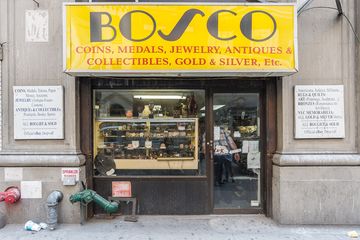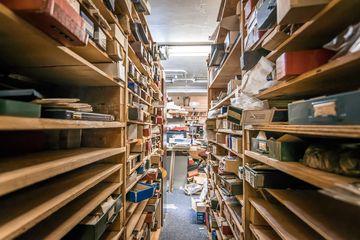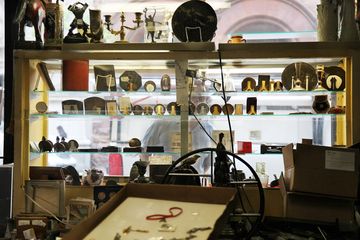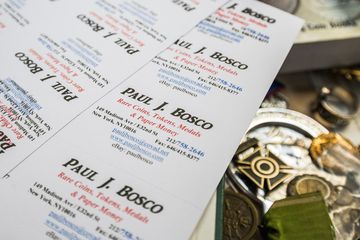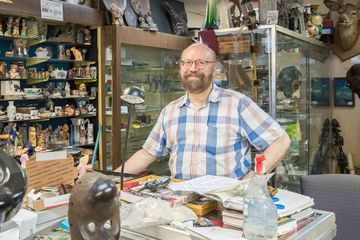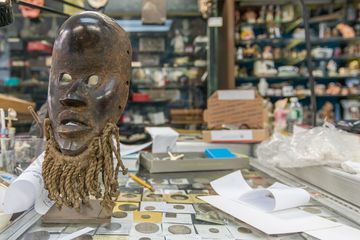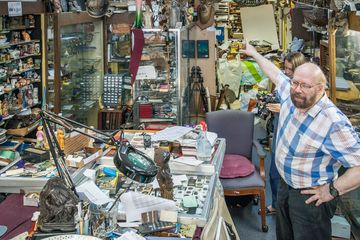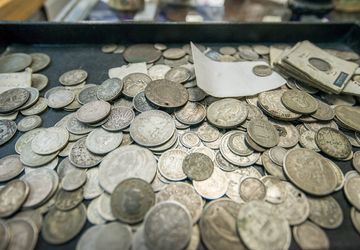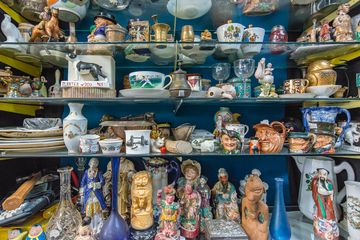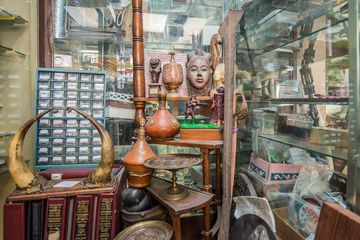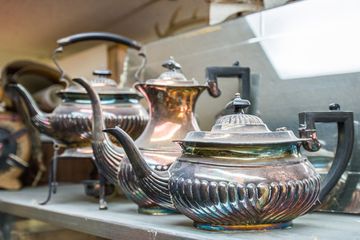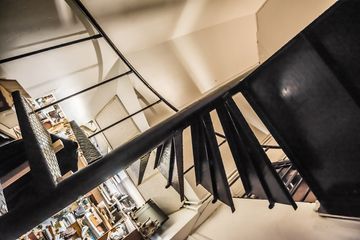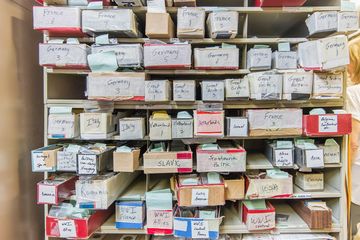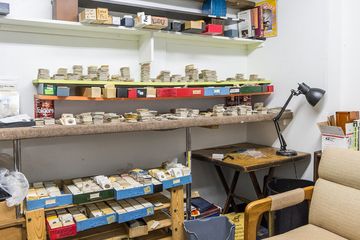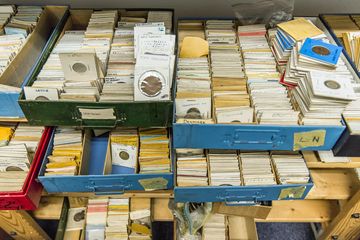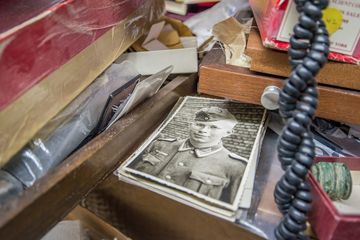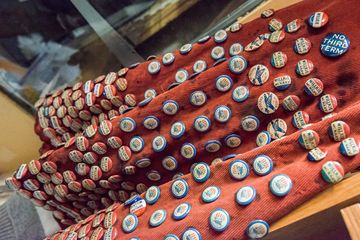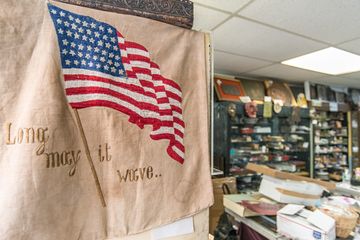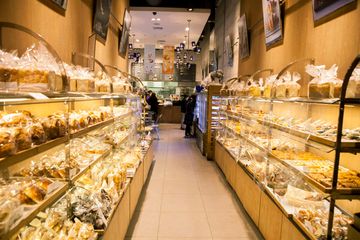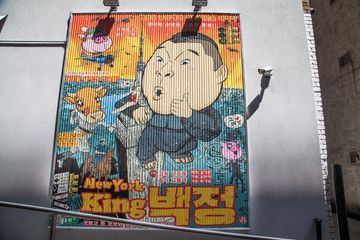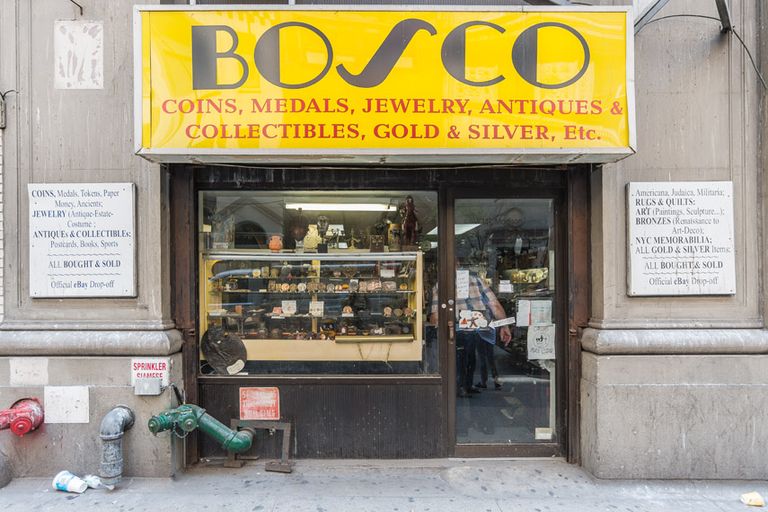
“I have half a million coins and medals for sale,” Paul Bosco said proudly as he ushered me into his shop. “That’s right, half a million.” And yet when I walked inside, in addition to being struck by his massive coin collection, I was drawn to his fascinating assortment of antiques - Turkish pipes and American pocket watches, old costume jewelry and wooden masks, vintage paintings and postcards. The shop was filled to the brim with delightful, historical finds.
The rest of the Manhattan Sideways team split up eagerly, wandering the store as if on a treasure hunt, while I lingered behind to talk with Mr. Bosco. The first coin he ever collected, he told me, was a sixteenth century brass jetton from the Netherlands. Since pencil and paper were rare at the time, these coins were placed in slots on a table and used for counting, a sort of European version of the abacus. The next thing I knew, we were talking about sixteenth century wars and Mr. Bosco’s favorite type of coin: decapitati in numis, medals of people getting their heads cut off.
I quickly learned that Mr. Bosco is a hardcore history buff, more interested in discussing World War I or Art Nouveau than his own life story. But I finally convinced him to tell me about the time he has spent amassing a treasure trove of coins, medals, and antiques. “I’ve been doing this since 1973,” he told me. “Full-time since 1975.” He worked mostly with foreign coins at first, but when he opened a coin store in the Manhattan Art and Antiques Center in the early 1990s, he expanded into American coins and began to dabble in antiques. A flood in the early 2000s forced him to close his shop, and he operated out of a storeroom for three years, before finally settling into his current location in 2008.
Some of Mr. Bosco’s items cost only a few dollars, while others go for several thousand. Though his customers are usually foreigners and tourists, he mentioned that New Yorkers often stop in to purchase some of his best sellers, which include old silver dollars and a six-piece complete set of New York City subway tokens. While he talked, I browsed through his astounding inventory of 50,000 medals, arranged by topic in helpfully labeled boxes: medicine, aviation, World War One, Lord Byron, Mythical Beasts, and many more. Some of these large, commemorative coins dated as far back as the Renaissance.
When Mr. Bosco told me that his all-time favorite item in the store is “a portrait of Abraham Lincoln made out of leaves,” I thought my ears had deceived me. But I had heard right, and there was no stopping him from leading the entire team upstairs to view it. Still in its original frame from 1890, the portrait features the sixteenth president in faded brown and orange tones, as well as a bald eagle biting a chain in half to free a group of slaves. The portrait is signed “Jacobi,” and Mr. Bosco explained that it was most likely made by a Russian Jewish immigrant who viewed Lincoln as a champion of the underclasses.
The more time I spent at Bosco, the more amazed I was by the endless inventory of coins and antiques hidden behind such a small, unassuming storefront. Bosco is truly one of Manhattan’s best-kept secrets, full of wonders and surprises for anyone who ventures inside.
